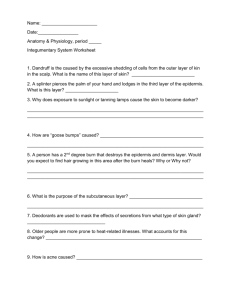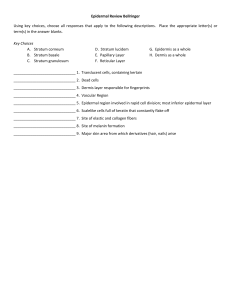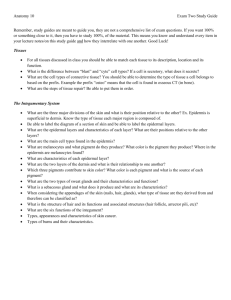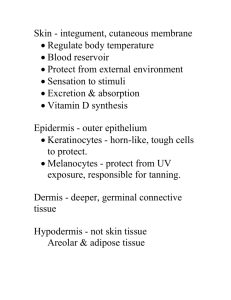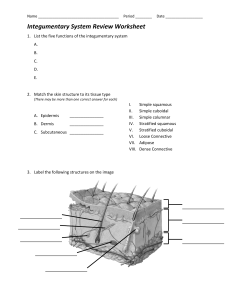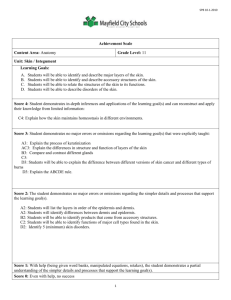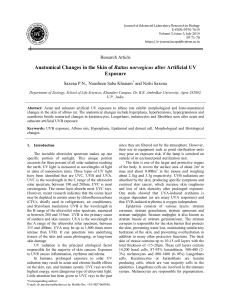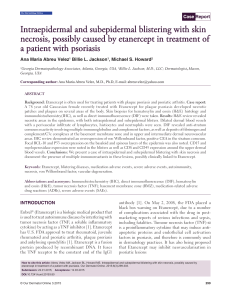Chapter_6 integument.doc
advertisement
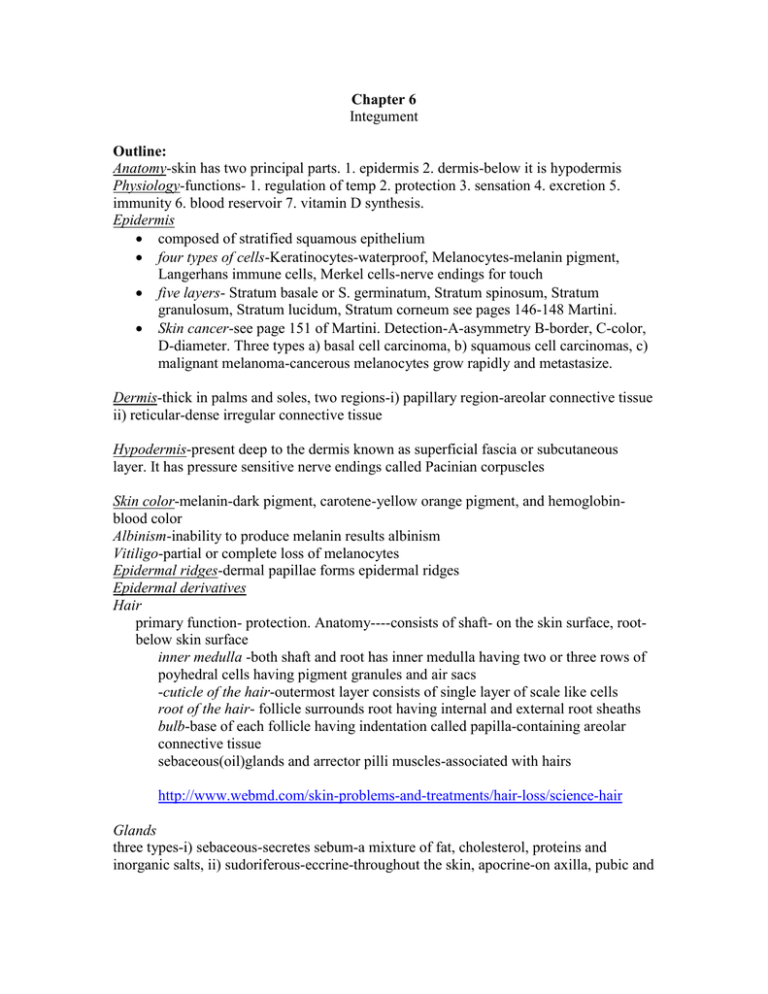
Chapter 6 Integument Outline: Anatomy-skin has two principal parts. 1. epidermis 2. dermis-below it is hypodermis Physiology-functions- 1. regulation of temp 2. protection 3. sensation 4. excretion 5. immunity 6. blood reservoir 7. vitamin D synthesis. Epidermis composed of stratified squamous epithelium four types of cells-Keratinocytes-waterproof, Melanocytes-melanin pigment, Langerhans immune cells, Merkel cells-nerve endings for touch five layers- Stratum basale or S. germinatum, Stratum spinosum, Stratum granulosum, Stratum lucidum, Stratum corneum see pages 146-148 Martini. Skin cancer-see page 151 of Martini. Detection-A-asymmetry B-border, C-color, D-diameter. Three types a) basal cell carcinoma, b) squamous cell carcinomas, c) malignant melanoma-cancerous melanocytes grow rapidly and metastasize. Dermis-thick in palms and soles, two regions-i) papillary region-areolar connective tissue ii) reticular-dense irregular connective tissue Hypodermis-present deep to the dermis known as superficial fascia or subcutaneous layer. It has pressure sensitive nerve endings called Pacinian corpuscles Skin color-melanin-dark pigment, carotene-yellow orange pigment, and hemoglobinblood color Albinism-inability to produce melanin results albinism Vitiligo-partial or complete loss of melanocytes Epidermal ridges-dermal papillae forms epidermal ridges Epidermal derivatives Hair primary function- protection. Anatomy----consists of shaft- on the skin surface, rootbelow skin surface inner medulla -both shaft and root has inner medulla having two or three rows of poyhedral cells having pigment granules and air sacs -cuticle of the hair-outermost layer consists of single layer of scale like cells root of the hair- follicle surrounds root having internal and external root sheaths bulb-base of each follicle having indentation called papilla-containing areolar connective tissue sebaceous(oil)glands and arrector pilli muscles-associated with hairs http://www.webmd.com/skin-problems-and-treatments/hair-loss/science-hair Glands three types-i) sebaceous-secretes sebum-a mixture of fat, cholesterol, proteins and inorganic salts, ii) sudoriferous-eccrine-throughout the skin, apocrine-on axilla, pubic and areolae of the breast, iii) ceruminous-produce waxy secretion called cerumen, iv) mammory glands Nails Hard keratinized cells, has nail body and nail root. L Wound healing: Epidermal and deep wound healing-inflammatory phase, migratory phase, proliferative phate and maturation phase Thermoregulation: homeostasis Burns-three degrees. Aging-thinning of skin, wrinkling, reduced melanocyte activity. development http://www.articleinput.com/e/a/title/The-seven-basic-functions-of-human-skin/
